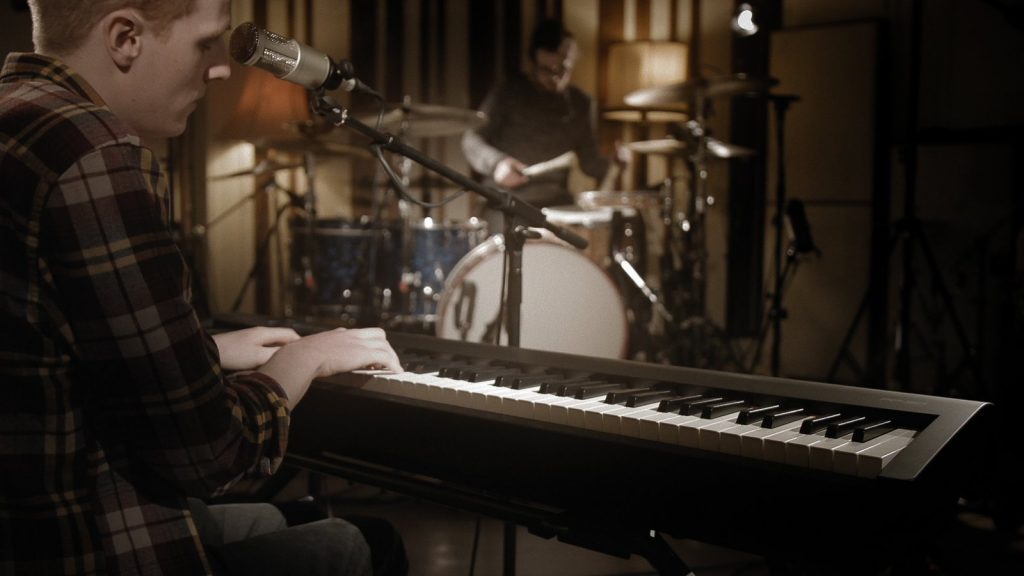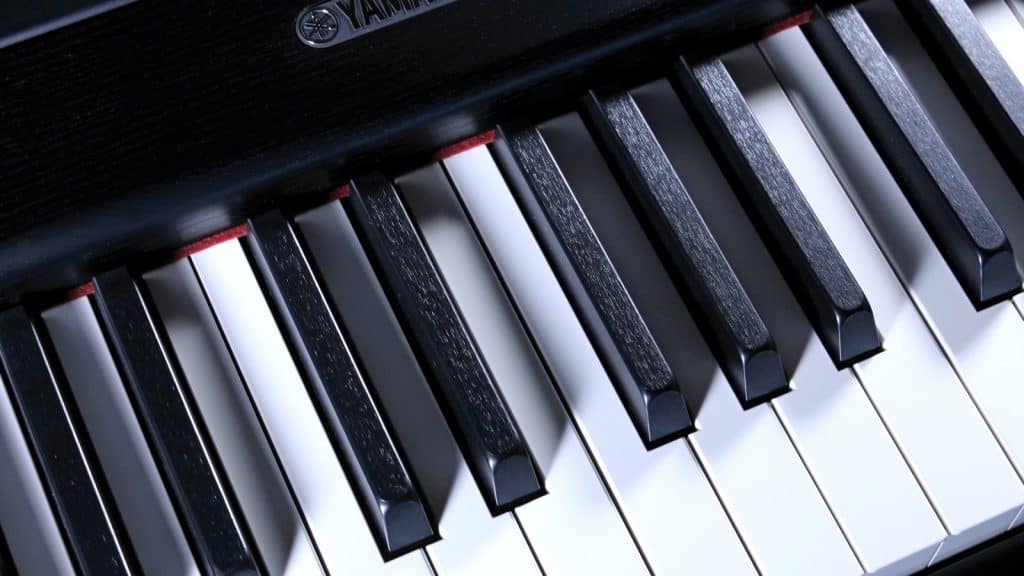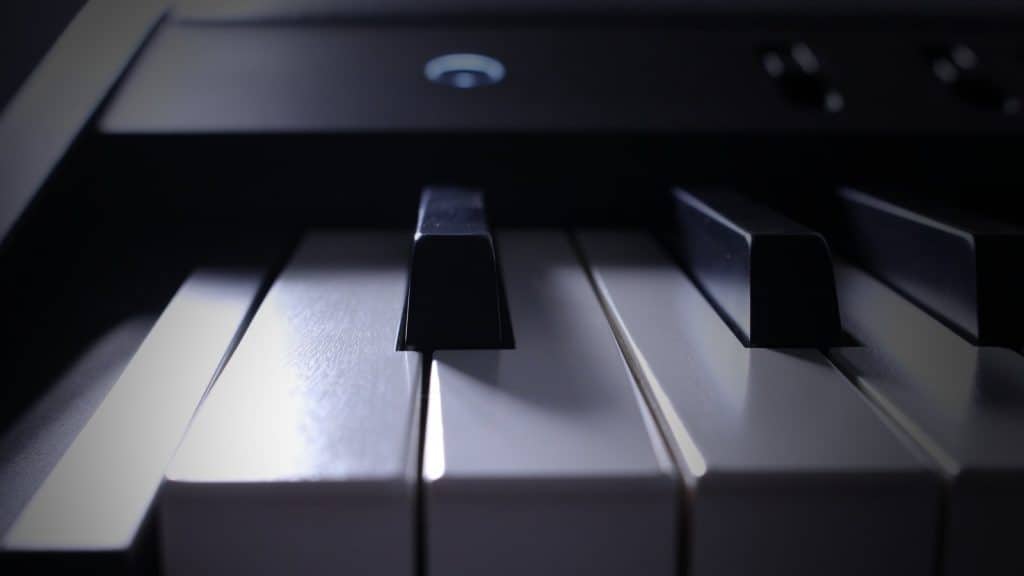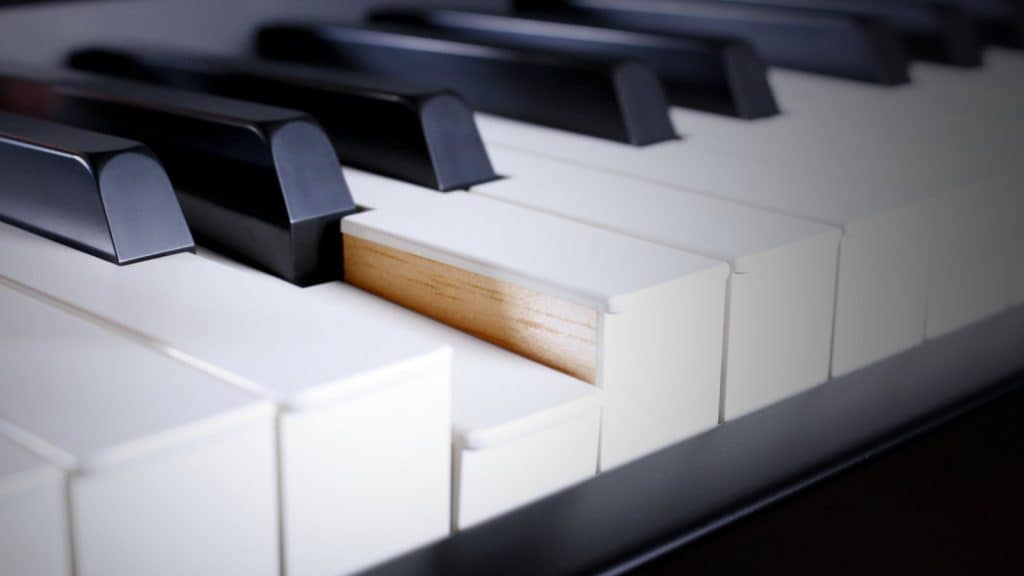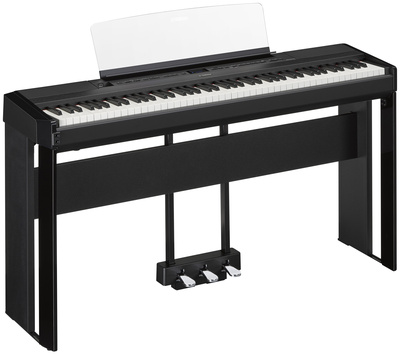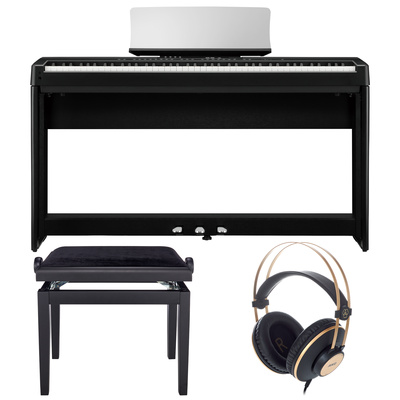Details to Consider When Buying
The majority of manufacturers offer optional stands to match their portable pianos. In many cases, you can choose between purchasing just the stand or adding a triple pedal unit. It’s worth checking out bundle offers from retailers, which often include additional accessories such as piano benches, stands, and headphones at attractive prices.
Most portable pianos under $2,000 are offered in black or white finishes. Matching optional stands and pedal units typically range from $150 to $300, depending on the model. Note, however, that portable pianos also don’t come with a built-in keyboard cover.
One potential drawback of portable pianos is their reliance on external power supplies, which is the case for all manufacturers. These can cause problems when traveling, such as wobbly plugs, thin cables, or the risk of forgetting the power supply at home. Stage pianos, on the other hand, tend to have more robust built-in power cords.
USB Audio/MIDI Function
This seemingly small feature can significantly enhance the integration of a digital piano with a music computer, tablet, or smartphone. While not yet standard on all digital pianos, the USB Audio/MIDI function is becoming increasingly common. A digital piano equipped with this feature essentially includes a built-in audio/MIDI interface, which is particularly valuable for recording purposes when used with a digital audio workstation (DAW).
Additionally, this function simplifies the connection between the piano and smart audio devices. You only need a single USB cable (with a Camera Connection Kit or OTG adapter if necessary) to seamlessly connect the piano to your device. This setup allows you to play the piano while simultaneously hearing the app’s sound through the piano’s built-in speakers or headphones.
Here you can find a list of digital pianos with USB Audio/MIDI functionality.*

